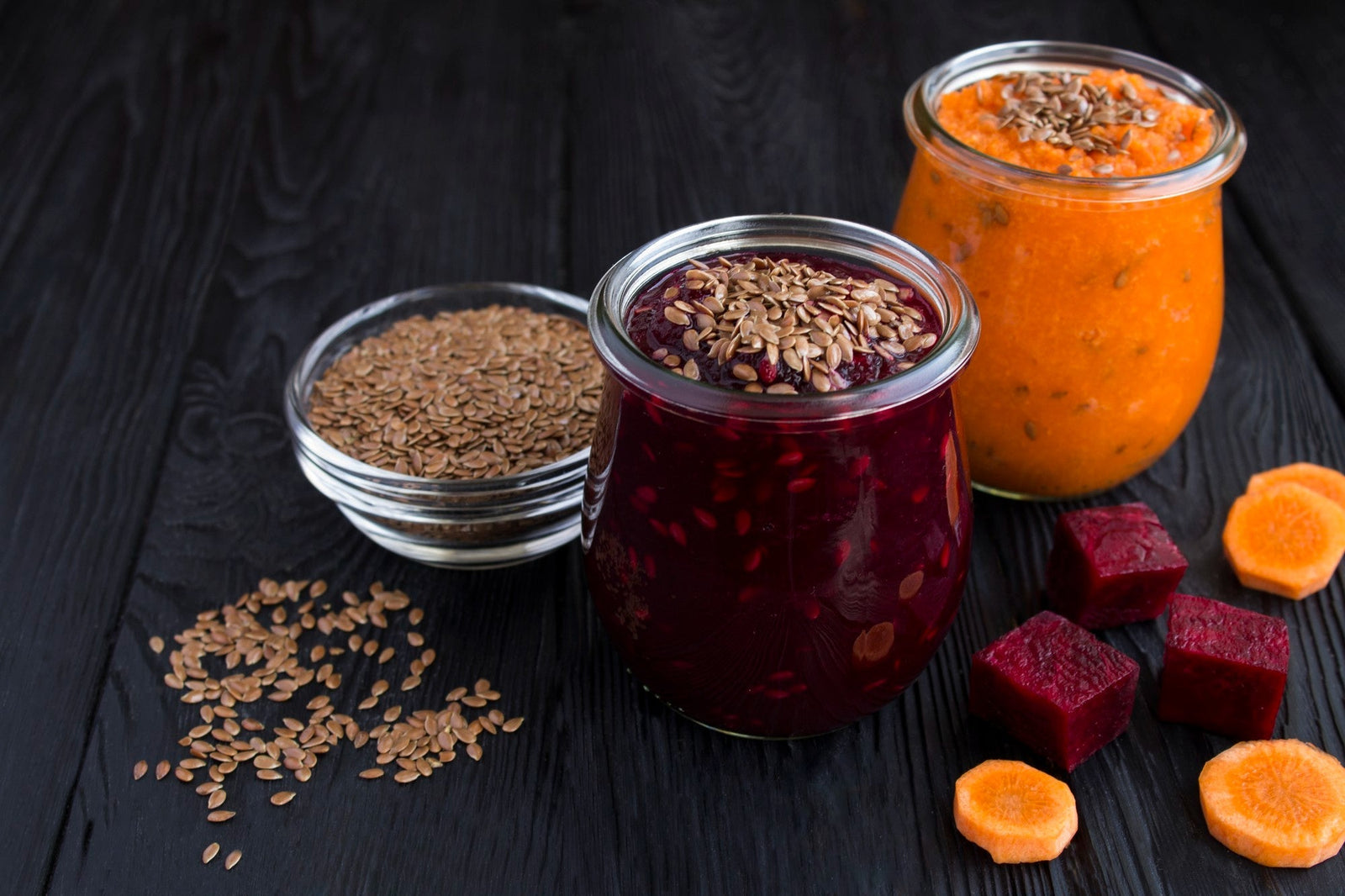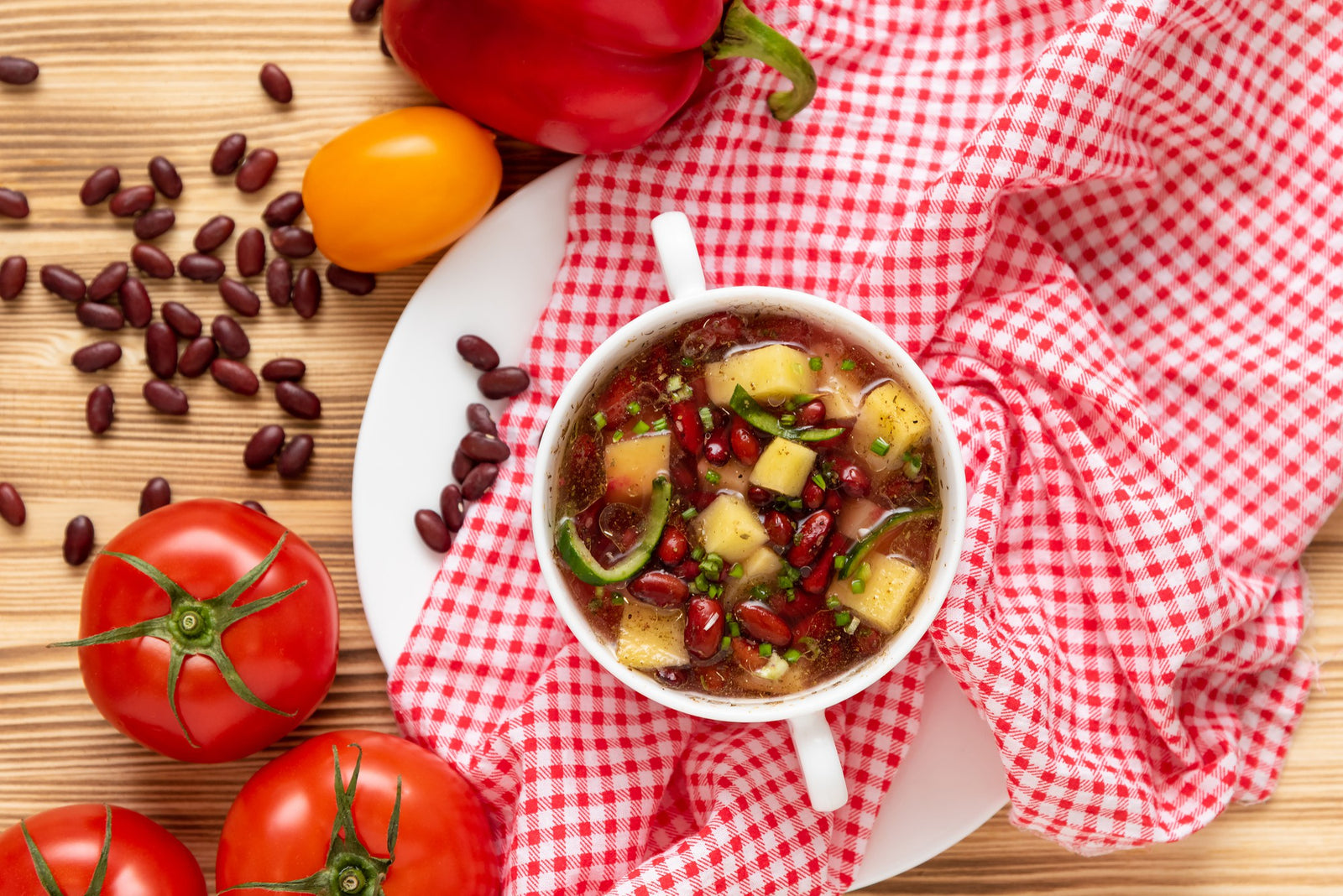
October 16, 2023 4 min read
When it comes to superfoods, garbanzo beans are real champions. These tiny legumes, also known as chickpeas, aren't just delicious; they're packed with health benefits. In this article, we'll dive into the world of garbanzo beans, exploring their nutrition and sharing tasty recipes to help you enjoy them.
Garbanzo Beans: A Nutritional Treasure
Garbanzo beans are not only a staple in many traditional dishes but also a treasure trove of essential nutrients. Let's take a closer look at what makes these legumes a nutritional powerhouse.
Rich in Protein: Garbanzo beans are an excellent source of plant-based protein. Just one cup of cooked garbanzo beans provides about 15 grams of protein, making them a valuable addition to vegetarian and vegan diets. Protein is essential for muscle growth, tissue repair, and overall body function.
High inDietary Fiber: Fiber is your digestive system's best friend, and garbanzo beans are brimming with it. A single cup of cooked garbanzo beans contains around 12 grams of dietary fiber. This fiber aids in digestion, promotes regular bowel movements, and helps maintain healthy cholesterol levels. It also contributes to a feeling of fullness, which can assist in weight management.
Packed with Vitamins and Minerals: Garbanzo beans are loaded with essential vitamins and minerals. They're particularly rich in folate (vitamin B9), which is crucial for cell division and the formation of DNA. Additionally, garbanzo beans contain significant amounts of vitamins like vitamin B6 and minerals such as manganese, magnesium, and iron, all of which play vital roles in various bodily functions.
Heart-Healthy Goodness: The combination of fiber, potassium, and folate in garbanzo beans supports heart health. Fiber helps lower bad cholesterol levels, potassium helps regulate blood pressure, and folate contributes to reducing the risk of heart disease.
Antioxidant Power: Garbanzo beans contain antioxidants, including flavonoids and polyphenols, which help protect your cells from oxidative damage caused by free radicals. Antioxidants are essential for overall health and may reduce the risk of chronic diseases.
Blood Sugar Regulation: Despite their carbohydrate content, garbanzo beans have a relatively low glycemic index (GI). This means they release glucose into the bloodstream gradually, preventing rapid spikes and crashes in blood sugar levels. This quality makes garbanzo beans suitable for individuals with diabetes.
Versatile Culinary Delight: Beyond their nutritional value, garbanzo beans are incredibly versatile in the kitchen. They can be used in a variety of dishes, from soups and stews to salads and spreads. Their mild, nutty flavor makes them a favorite ingredient in both savory and sweet recipes.

Health Benefits of Garbanzo Beans
Now that we've uncovered the nutritional power and health benefits of garbanzo beans, let's explore some delicious ways to incorporate them into your diet.
Garbanzo Bean Recipes
Conclusion
Garbanzo beans, with their impressive nutritional profile and versatile culinary possibilities, are a true nutritional powerhouse. Whether you're looking to manage your weight, support heart health, or simply enjoy a tasty and filling meal, garbanzo beans have got you covered. So, embrace the nutritional power of these humble legumes by incorporating them into your diet and savoring their numerous health benefits. Your taste buds and your body will thank you for it.
❤ Try our USDA certified organic Garbanzo Beans ❤
Related Recipes:
Comments will be approved before showing up.

January 27, 2025 3 min read
Flaxseed, the tiny yet powerful superfood, is packed with nutrients that can support weight loss. From curbing hunger to stabilizing blood sugar, this guide dives into the science of how flaxseed can help you shed those extra pounds.

December 11, 2024 3 min read
Discover three quick and easy soup recipes featuring organic small red beans. From a classic vegetable soup to a creamy potato blend, these wholesome recipes are perfect for chilly days and busy weeknights. Packed with flavor and nutrition, these soups will warm your heart and soul this winter!

December 06, 2024 3 min read
This vibrant and nutritious Green Lentil Salad combines tender lentils with grilled chicken, fresh vegetables, and a zesty lemon dressing. Packed with protein, fiber, and essential vitamins, it’s the perfect healthy meal for any time of day.
© 2026 Be Still Farms- Real, Fine Organics.
Privacy | Terms | Refund Policy | Organic Certification
